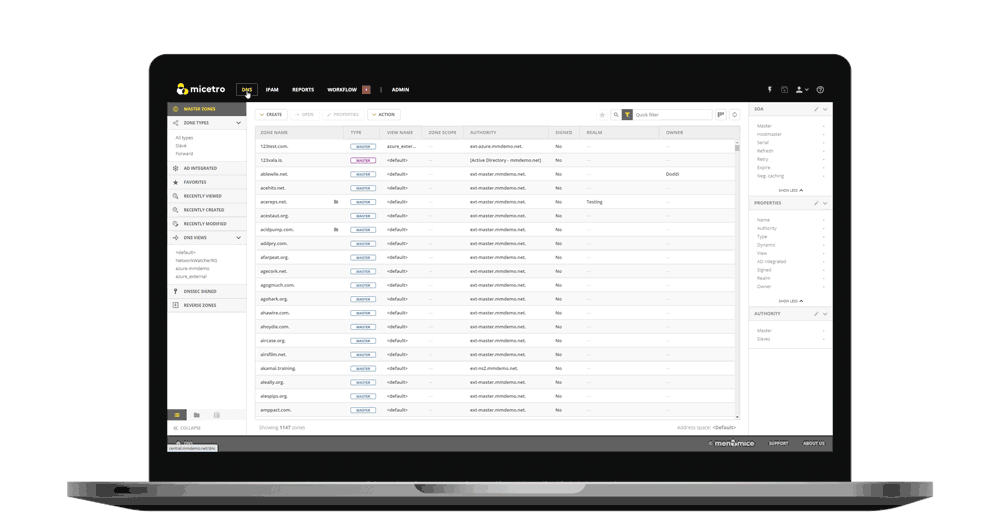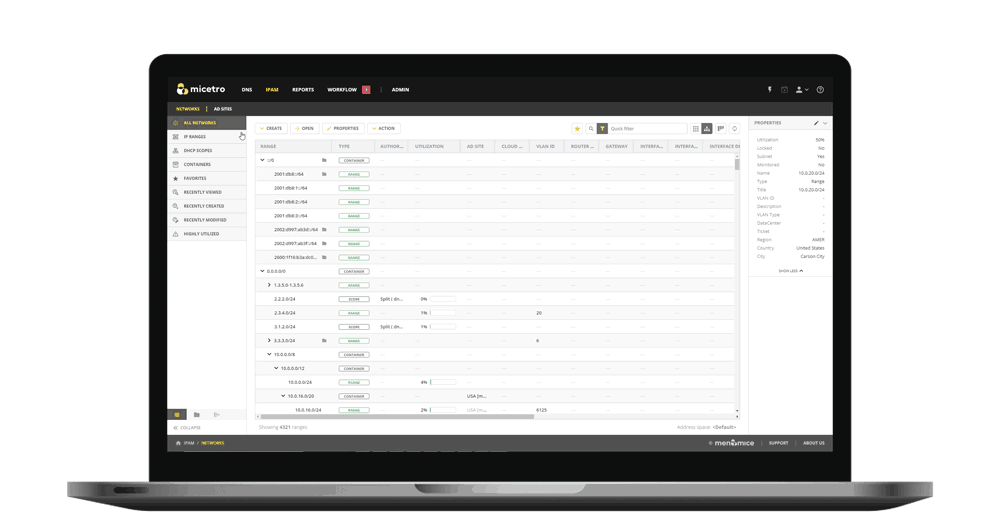Do you have enough network visibility today to secure your network infrastructure?
An often overlooked element in securing modern, heterogeneous network infrastructures is network visibility. Let's take a look at why network visibility is important, what benefits it offers beyond security, and how to achieve it.
Dec 9th, 2022
An often overlooked element in securing modern, heterogeneous network infrastructures is network visibility. Modern business networks are greatly evolving. As the number of network devices grows and their types are diversified, traditional monitoring and security solutions are challenged to secure the network infrastructure. The resulting blindspots are lucrative hotspots for hackers.
Let's take a look at why network visibility is important, what benefits it offers beyond security, and how to achieve it.

What is network visibility?
Network visibility is about having knowledge of all the devices either moving in and out of or permanently residing in the network. It also includes knowledge about, and control over, network and application performance, device discovery, traffic, topology mapping, etc. By using network monitoring tools and analysing how data is aggregated and distributed between these components, network administrators can gain better insight into network operations and possible security threats.
For example, network visibility allows you to monitor data movement details such as origin and destination and which users are responsible for the operation. This information will enable you to identify any unauthorized access to resources, and set up alerts and better security measures. Network visibility creates faster processes to patch vulnerabilities, and reduces any damage caused as well as the outage time.
Network visibility enables you to monitor network performance as a whole, from latency to bandwidth, in order to optimize the performance of your network. Similarly, you can analyze the performance of an application based on who is using it, how much load it creates for the infrastructure, and how it behaves on the network. Based on these insights, you can then route (or even re-route) the application traffic through the right pathways for optimizing resource usage such as bandwidth and server processing power.

Network visibility with DDI solutions
Modern organizations use multiple network security tools to monitor and manage their infrastructure. The influx of hundreds of BYoD and IoT components across the organization, and the work-from-home paradigm taking root more and more, further compound the challenges in providing, assigning, and managing resources. Organizations need comprehensive tools that can effectively manage multiple services, such as DDI solutions for DNS, DHCP and IP address management.
Holistically managed DDI improves efficiency, resiliency, and security. It offers automated network maintenance while providing clear visibility into network operations. Managing multiple tools is a task that can quickly bloat your overhead, and transferring data between them can open up additional security vulnerabilities. A good DDI solution provides 360 network visibility, with which you can easily monitor and manage the entire IP infrastructure from a single pane of glass.
Clear visibility of these core network services will positively affect the network as a whole. Given these baseline and additional benefits, it's no surprise that organizations are aggressively embracing DDI solutions. According to Mordor Intelligence, the DDI market earned a revenue of $0.9 billion in 2020. This value is expected to touch $1.712 billion by 2026, growing at a CAGR of 11.4% between 2021 and 2026.
Challenges with DDI tools
Although DDI solutions are by nature able to solve major network visibility challenges, they vary in terms of effectiveness. Many DDI tools are designed still with a traditional understanding of networks in mind. As such, they are unsuitable to adapt to modern heterogeneous networks comprising IoT, edge and cloud networks, overlapping each other in a constant flux. And even when technically capable of solving this challenge, the resulting gargantuan management overhead strips away the benefit they set out to provide in the first place.
Similarly, increasingly DevOps-driven teams require solutions different from those of traditional processes, that streamline agile practices into the organization via cross-functional teams. The traditionally managed infrastructure falls behind in trying to provide the speed, scale, and sophistication they require. Cloud-based operating models offer greater flexibility in theory, but result in challenges for the DDI team. When resources get divided between on-premise and the cloud, many monitoring systems get divided, too: the organization implements their DDI solutions, cloud providers implement their own DDI controls, and once again you're dealing with multiple incompatible systems and the problem of syncing data between them. Without a single source of truth for managing IP resources, organizations incur extra costs, outages, data conflicts, security vulnerabilities, network performance hits, and service delivery issue.
Managing thousands of conditional forwarding rules across hundreds of overlapping IP spaces by a small team inevitably ends up in outages due to conflicting directives. Further, the industrial IoT revolution brings a multitude of devices into the network and is quickly erasing the difference between external and internal endpoints. In today’s IIoT networks, thousands of sensor devices are interconnected and sharing data. Network visibility is not an option or added benefit but a must-have, mission-critical control mechanism.

Choosing the right DDI solution for your organization
Modern organizations require a DDI solution that is capable of automating the provisioning of IP resources, centralizing DNS authority while giving both comprehensive, integrated visibility and freedom of movement across multiple clouds, and scaling to accommodate rapid (I)IoT. A single DDI solution has to be the single source for IP resources across the entire infrastructure, regardless of size, location, or the underlying technology, while establishing operational portability that allows you to proactively monitor and manage network security from any location using any device.

Micetro by Men&Mice is such a DDI solution. A platform-agnostic DDI orchestration tool, Micetro allows you to integrate multiple IP services under a single user interface, and automate with a single API (through REST, JSON-RPC and SOAP). It offers secure redundancy, smooth multi-cloud migration, fail-over support, active lease recovery, live scope migration and custom reporting -- to name just some of the key features.
Make it simple and easy to manage your network infrastructure with Micetro!